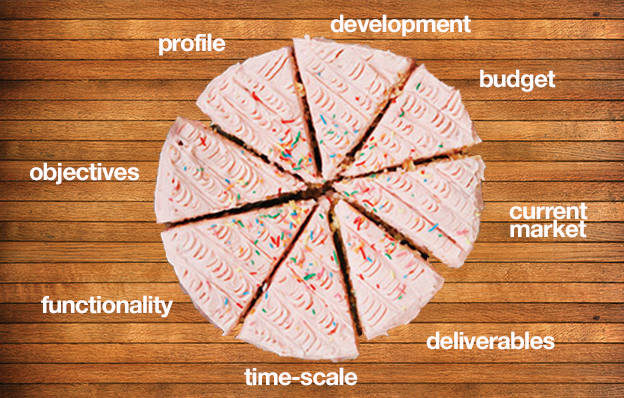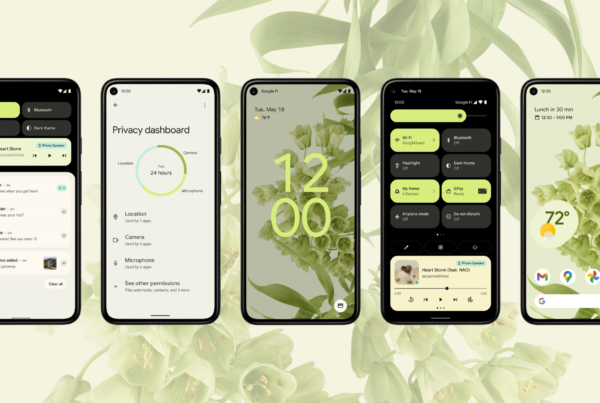If you are considering working with a digital agency for the first time, then you may be wondering where to begin when putting together a project brief. Many businesses create templates that they work from in order to keep a structure to their design projects. However, sometimes a project requires a custom brief.
So, what is a project brief?
A brief is simply a document containing all information a digital agency might need to be able to quote for and carry out the required digital design and development work. There aren’t any specific rules on how briefs should be written but they should contain the company background, target audience and brand guidelines. They might also include mood boards, key messages and mission statements and of course details about the project.
The idea is to help the prospective design agency to get a really good feel for the brand, your business and how you’d like to progress. Often the more time spent in preparation is key to the successful running of any design project. For example if it’s a website do you need it to be responsive? Do you need a CMS you can manage yourself? Do you want a single-page site, a parallax site or perhaps a horiztonal scrolling design? Or is your overall ethos about the user experience and web usability? A little knowledge about what you require will go a long way and definitely speed up the process.
Similarly, if you are hoping for someone else to provide the creative suggestions you can also put this in the brief as a digital agency should be expected to add value in this area. Be sure to include any specifics if you are giving a designer free reign over the project. If you don’t, then you may be liable to pay extra if you require the digital agency to deviate from a brief. My advice would be to think it over. Be open-minded but also decisive.

What are the aims of the brief?
The aims of your brief are to inform the digital agency about your requirements, who you are, what you hope to achieve, your target audience and any other helpful information that will form the basis of the project. The briefing document should provide all the relevant information that designers and developers need to construct a proposal with a break down of costs. Your brief should aim to inform and direct the digital agency as to your requirements and expectations, allowing them to assess your project clearly and deliver on time and within budget.
How should you approach the brief?
You should approach the brief from where the business is at now. It is extremely helpful to provide digital agencies a ‘real’ sense of where your business is at a particular time as it may offer more/less flexibility for their work. This is somewhat dependent on whether you are rebranding, updating or migrating existing designs and websites or if you are coming from a position of launch. For companies that are already established, designers and developers need to understand what is and isn’t working for them, in order to approach the brief accordingly. You brief should outline all the nitty gritty bits that make up your overall vision without being too vague.
Why should you write a brief and not just talk about it?
A lot of digital agencies in London still work from a spoken brief that they have received during an initial stage briefing meeting. This is often a directed conversation with specific topics however it still isn’t quite as precise as the written brief.
During a meeting it is quite easy to miss out key points of information, this could be due to a number of reasons and can be avoided if a written brief is provided and agreed by both parties. This creates a solid starting point and ensures you are starting on the same page.
A fool-proof recipe for writing a good project brief for a digital agency
[two_third_last] [/two_third_last]
Instructions (in under 10 steps)
[/two_third_last]
Instructions (in under 10 steps)
- Profile: Introduce your company
Like any initial interaction with someone new, the very first step of briefing should be to introduce your company. Let us know who you are, what you do and where you do it. Let us know what type of a company you are, do you have various strands to your business? What is your company ethos? Do you have a mission statement? What is your business plan? The more we know, the easier it will be to get inside your brand and understand what you might want from the project. - What are you trying to achieve?
Give as much information as you can about the background to the project. How has the project come about, what is it designed to do, how does it fit with other activities of your business? Most importantly, what are the objectives of the project? - Where do you fit in the current market place?
Describe the market you’re in, the current landscape and what you want to achieve in that market place? Do you have any market research that would be valuable to the designer? Importantly, who is your target audience? Who are your competitors? What do they do well? This will help the digital agency to determine what they can you do that will make you stand out. - Deliverables
What are the deliverables of the project? A brand, a website, a logo? Think about all of the elements you need from the project. Are there any specifications or sizes or branding guidelines the designer needs to adhere to? Do you already have designs that you would like to use? What does your business deliver? Does your business provide a service or product? Are you an ecommerce business? All this will help assist web designers and developers in understanding the potential of your project and the best way to approach it. - Offer some inspiration
If there’s a particular design/designer that you like or a certain type of overall look you are going for, then let your digital agency know. Provide a website link, a colour code or a mood board; anything that will help to ensure you are on the same page. If you have preferences over typography, photography and web layouts these will all help to visualise your ideas. - Timescales
It’s good to outline what impact you want to make with the project. How do you see the project influencing your organisation? Do you have targets? These can be numbers or goals. Do you have any key milestones and deadlines? This is important to establish how achievable your project is. This is an important point that you should discuss directly with the digital agency at an early stage. - Highlight any constraints on design
Some projects might require careful consideration due to design constraints. This could be anything from working with sensitive/ personal material or something as simple as sticking to existing styles or colours from brand guidelines. It might be that your business is part of a wider group and you want the digital agency to match a certain overall branding. Whatever the constraint, make sure you include all the points and required variations of the points within the brief. - Development
Dependent on what type of business you operate you may want to offer ideas for development during the early stages of briefing as it may determine whether the design agency has the availability to develop your project. They may also be very happy to establish a sort-of rolling relationship. We have clients who we work with again and again developing their initial stages and working on new projects. This often does happen organically but if you do have scope for growth still outline it in the brief. - Budget
You might not want to reveal your budget at this early stage but it will certainly help the digital agency to gain a better understanding of your expectations. It will also help them to establish how much support, if any, they can provide. It allows them to see if the project is feasible for both parties.
Summary
A well written brief will give a London digital agency the opportunity to do what they do best: apply their knowledge and experience to turn your vision into reality.
Creative Boom says ‘The best briefs are precise without skimping over the important bits, descriptive without being prescriptive and clearly set the aspirations and boundaries that the agency will be working to.’
If you would like Reactive Graphics to guide you when writing your next project brief please contact us.

